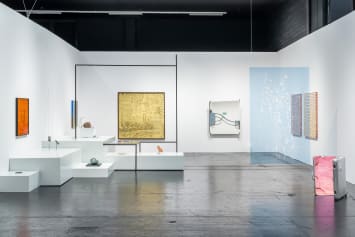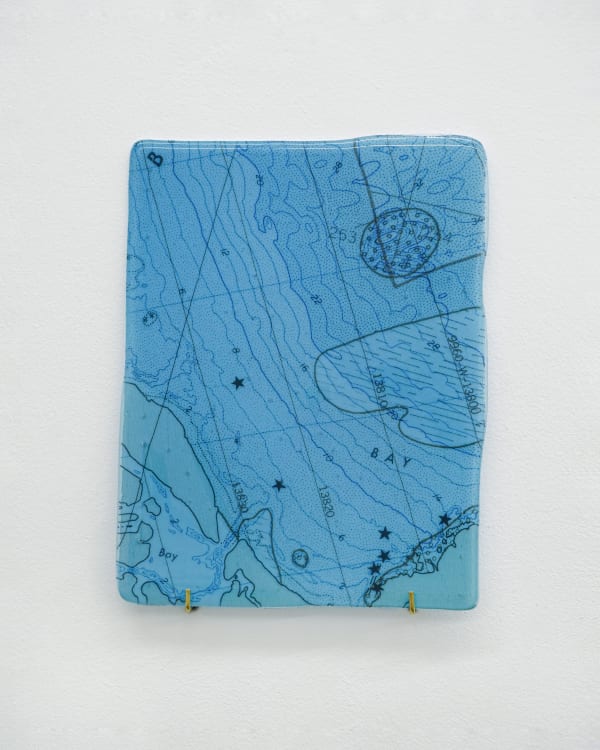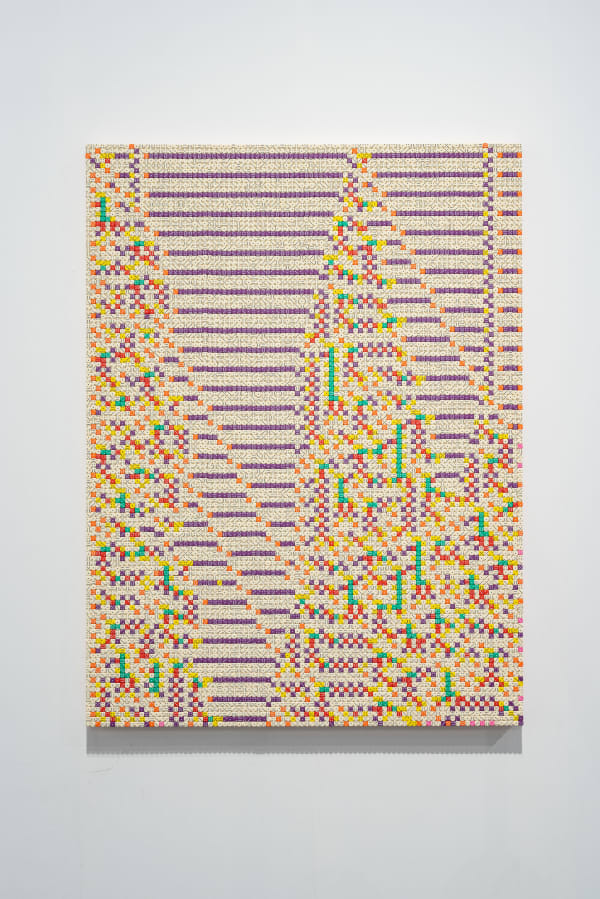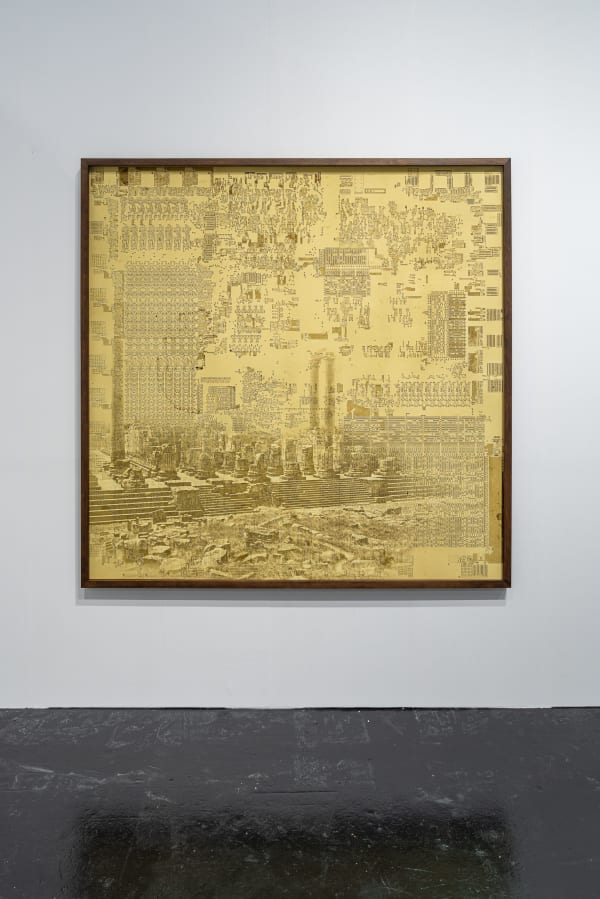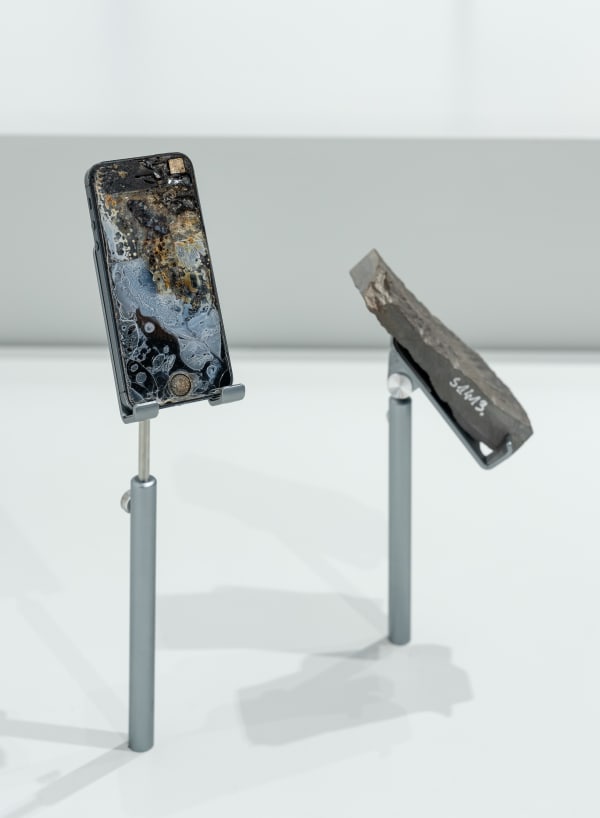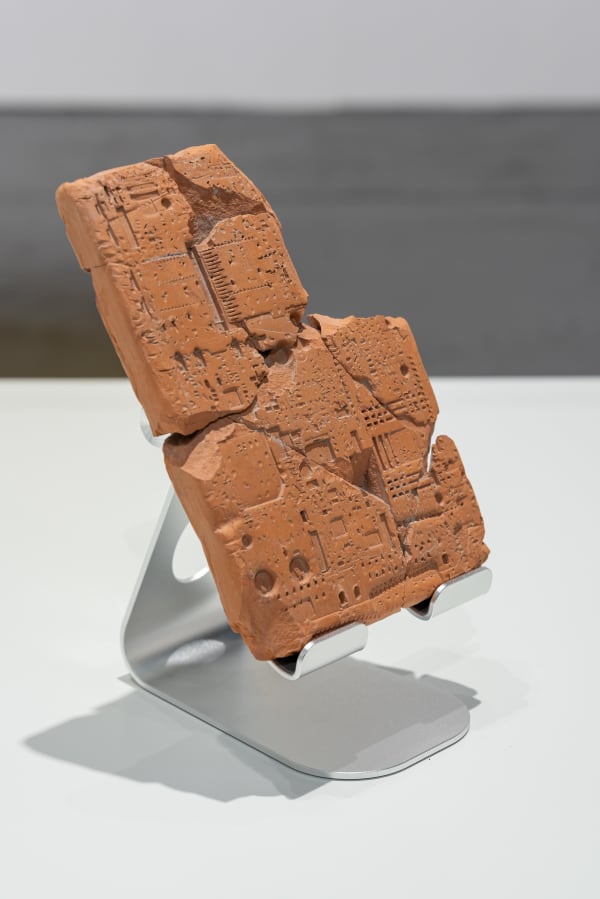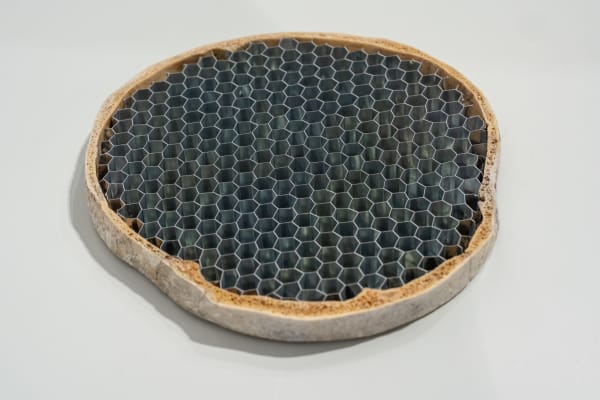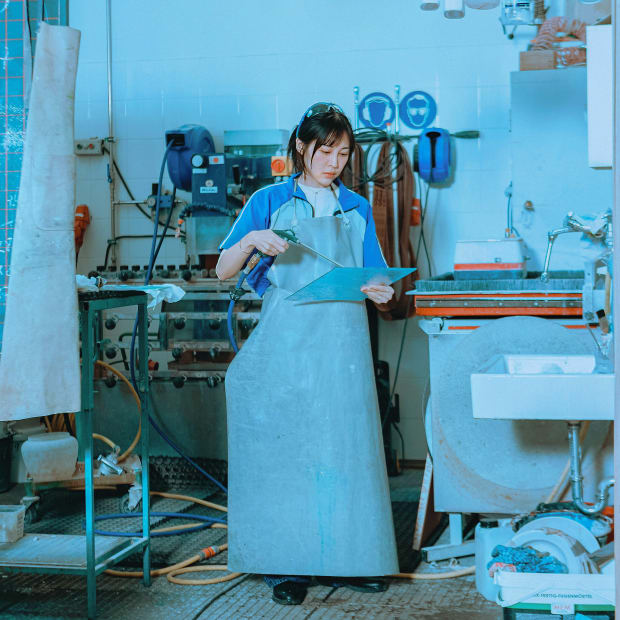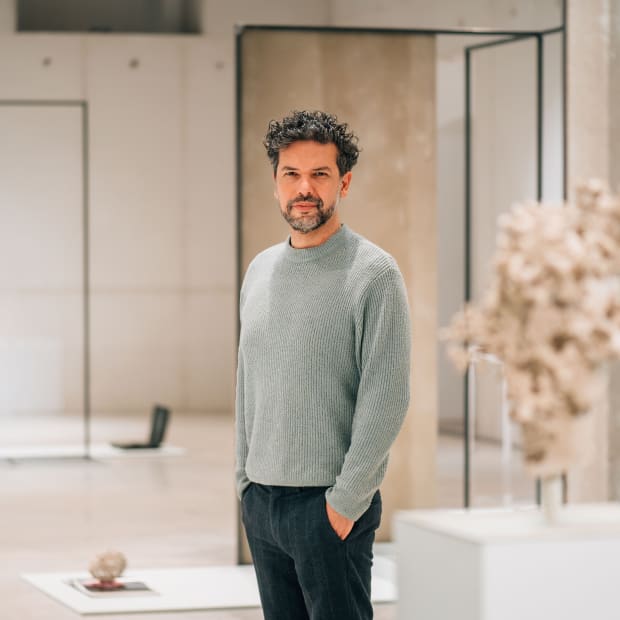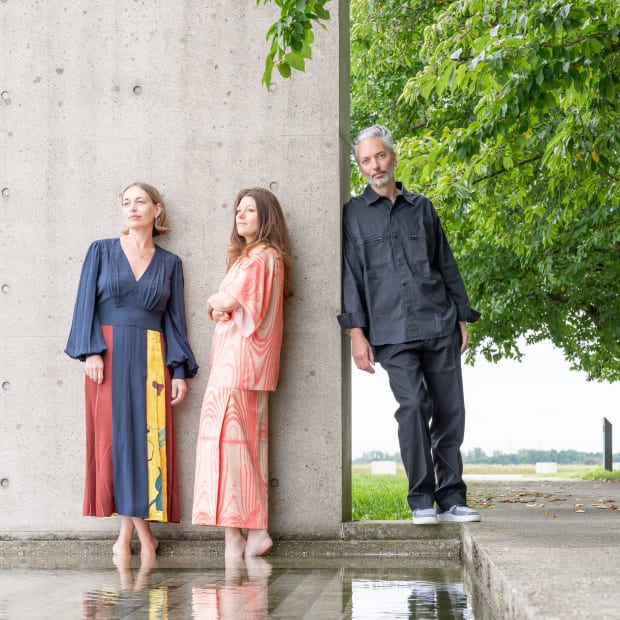For the presentation in the Collaborations sector of this year's Art Cologne, max goelitz presents a unique booth concept that brings works by the London-based artist group Troika into dialog with sculptural works by Nicolás Lamas and Ju Young Kim. The artistic positions share an interest in alternative readings of our reality, which they combine with scientific research to create novel, symbolically recoded objects.
In their paintings, sculptures and expansive installations, Troika explores the interactions between analog and digital realities. At the center of their interest are experiences and knowledge gained through technology and the ways in which it transforms man's relationship to nature, society and reality globally.
Nicolás Lamas works at the intersection of art, science, technology and everyday culture, combining diverse materials, life forms, technological artefacts and linguistic references. His sculptural assemblages deconstruct established views that determine the way we perceive, interpret and interact with the environment.
Ju Young Kim explores transitional states and transit zones in her sculptures and installations by combining industrial transportation modules from airplanes and cars into symbolically encoded works. She blends these with stained glass, cast metal, ceramics and plastic, thus bringing together high-tech objects with hand crafts techniques.
With these artistic positions, the booth offers a multi-layered examination of contemporary themes such as technology, perception, globalization and materiality, which are also explored in depth in international solo exhibitions by the presented artists.
Booth A-204
Troika
Nicolás Lamas
Ju Young Kim
Preview 7 November 2024
Fair Days 8 – 10 November 2024
Detailed photos and further information on the individual works can be opened by clicking on the respective images.
